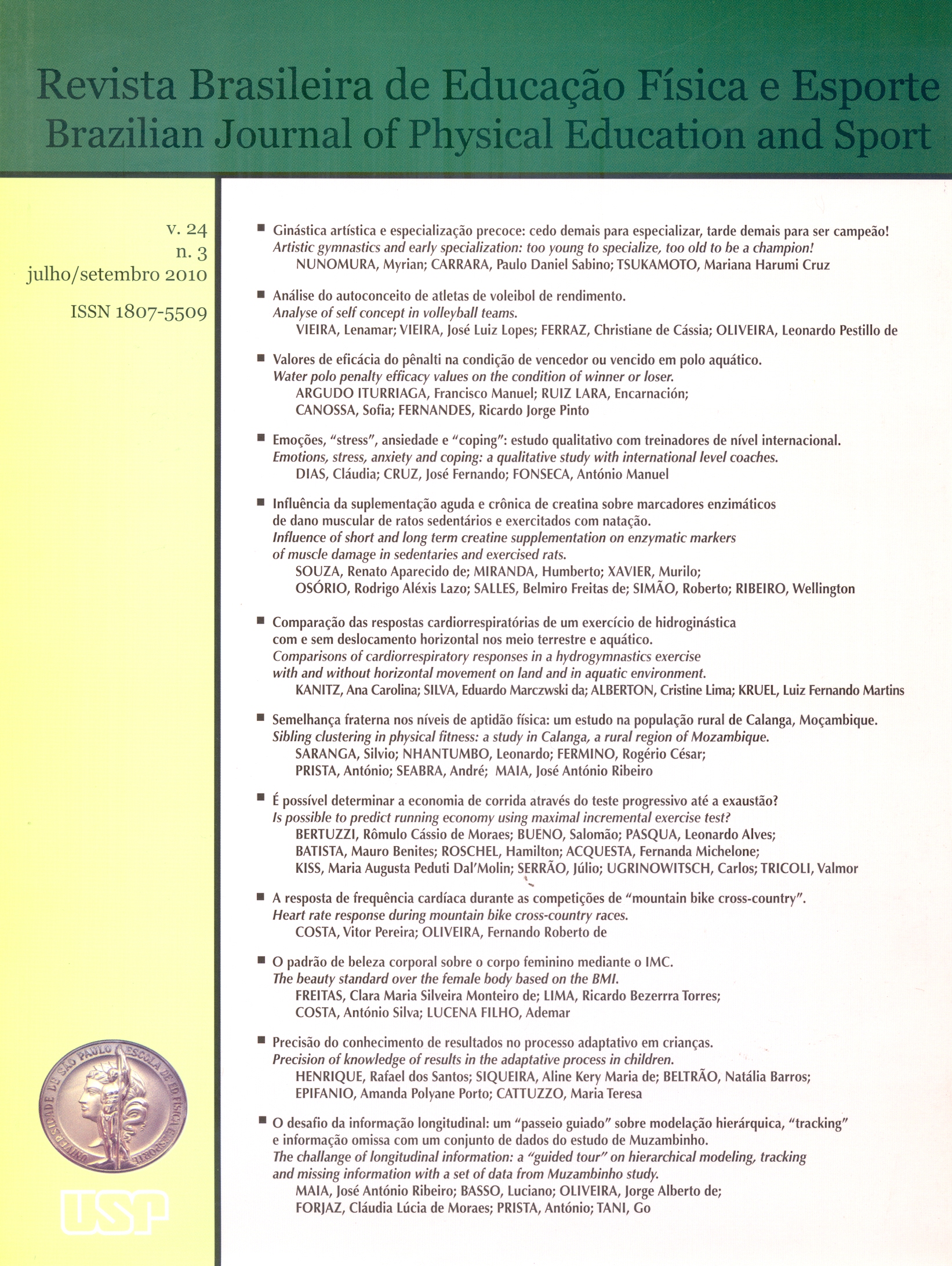Water polo penalty efficacy values on the condition of winner or loser
DOI:
https://doi.org/10.1590/S1807-55092010000300003Keywords:
Collective game, Competition, Micro situation, Coefficients, Water poloAbstract
The purpose of the present study is to assess the efficacy values specific of the penalty micro situations both with and without ball possession in water polo. Additionally, we aimed to analyze the relationship between the observed efficacy values and the condition of winner or loser. Video images were collected from all the matches of the X World Water Polo Championship (Barcelona' 2003). Subsequent analysis was performed by two experienced specialists. The appreciation of the penalty game micro situations was conducted through the determination of efficacy coefficients related to precision, definition, possibility, resolution, accuracy and concreteness. Differences between the male teams that win or lose were observed in all the 12 coefficients assessed. In the female group no statistical differences were found. In the male teams it is possible to accept the formulated hypothesis: the winning teams had higher efficacy values in the penalty micro situations comparing to the teams that were defeated. The absence of differences between the female teams seems to indicate that the efficacy in the penalty micro situation is not a strong influencing factor for the match final result.Downloads
Download data is not yet available.
Downloads
Published
2010-09-01
Issue
Section
naodefinida
License
Todo o conteúdo da revista, exceto onde está identificado, está licenciado sob uma Licença Creative Commons (CC-BY)
How to Cite
Iturriaga, F. M. A., Lara, E. R., Canossa, S., & Fernandes, R. J. P. (2010). Water polo penalty efficacy values on the condition of winner or loser . Brazilian Journal of Physical Education and Sport, 24(3), 323-329. https://doi.org/10.1590/S1807-55092010000300003


